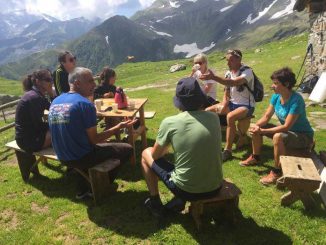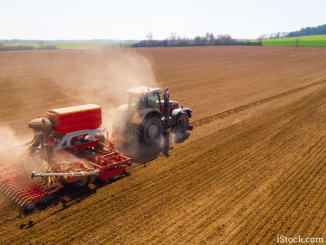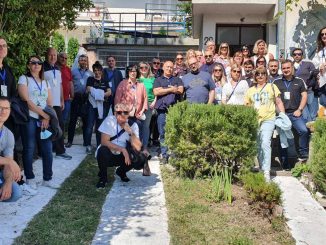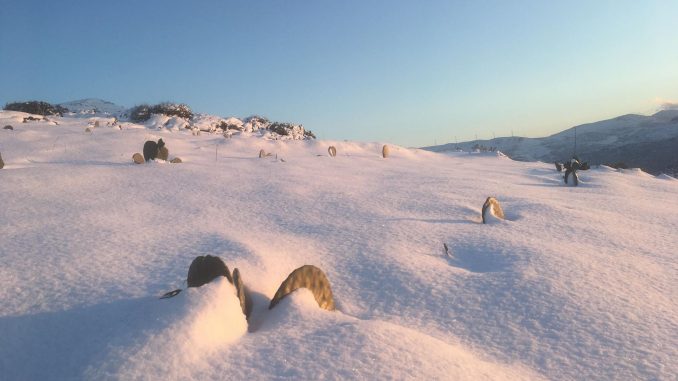
The last couple of months have brought a cold snap to our island. People rarely think of the Mediterranean winter, but our farm has been unrecognisable as for the first time we have seen our land covered in snow! Who would’ve thought the closest we’d get to a white Christmas would be in Greece!
As well as making the place look beautiful, the cold weather has given us some welcome respite and a bit of downtime to get cracking with some planning for Spring. Unlike elsewhere, farming in Greece means that we have a near year-round growing season. This may have its benefits agriculturally, but means that it can sometimes be difficult to squeeze in that all-important planning, as well as reflecting on the ups and downs of our first year together on the farm, so we’re more than happy to take the chance when the opportunity arises!
In my last letter, I spoke about the natural processes and patterns that we find in nature that we try to incorporate into the design of our farm. This letter covers one other key part of our farm strategy – support species.
“I get by with a little help from my friends”
The Beatles weren’t just singing about humans with their well-known song – it’s the same for plants! And that is exactly the idea behind support species. So what are support species and why are they so important? To put it simply, support species are species that are incorporated into the system but do not produce a crop.
The idea of support species stems from the observation that in nature, you always find a diversity of species growing together. Famously, people tend to see this diversity through the frame of competition, with Darwin’s ‘survival of the fittest’ mentality. Whilst this is true to some extent, it is also true that you can observe different species working together to support and facilitate the growth of others and help the good of the whole system in many complex interactions, for instance through creating a more biodiverse and species-rich system, as you find in a forest.
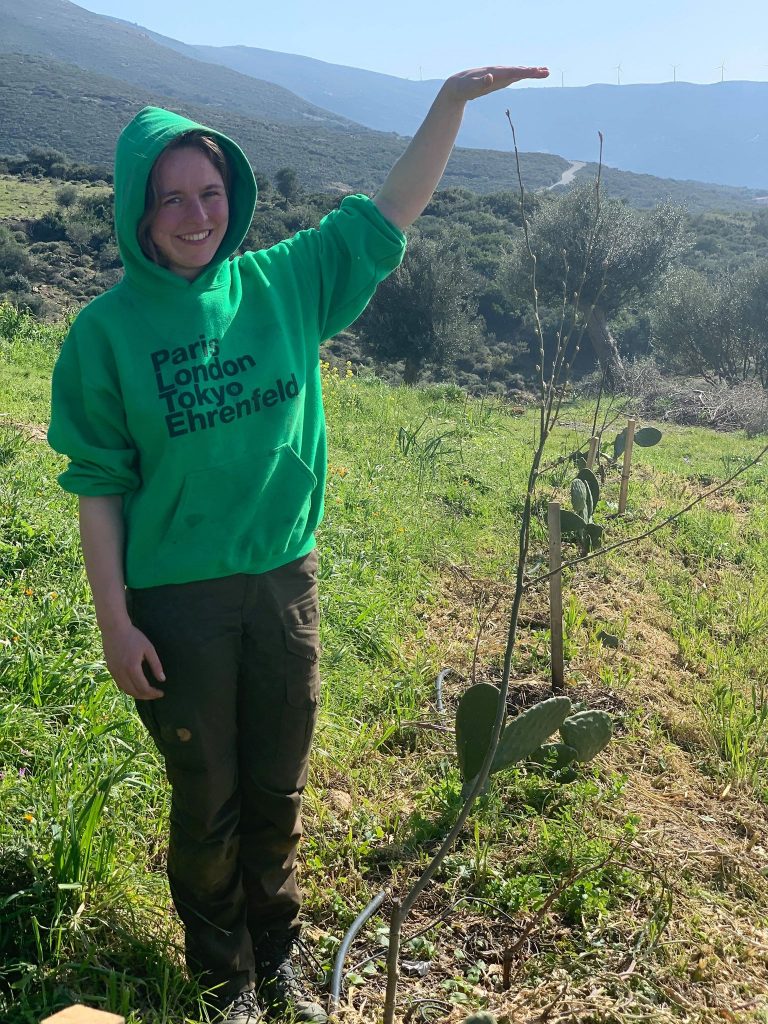
Why use support species?
So what kind of help do support species provide? Well, here at Mazi we’ve selected our support species on the farm to fit certain qualities needed at this early stage of our project. Namely, fast-growing trees that put down deep roots to de-compact and aerate the soil, and are incredibly hardy species that can grow in tough conditions. Typically, these are pioneer species which work to set the stage for the other species in the system, creating the conditions around our crops that they need to thrive. We have a mix of species that work to support our system in different ways, including Acacia, Cypress, Poplars, Mendicago and Carobs.
Support species can be used to optimise the system in a whole host of ways. A major role support species play at Mazi is for on-site biomass production. Our support species have been deliberately chosen as species that can both grow quickly and withstand heavy pruning. In this way, the branches and leaves can be turned into woodchips with the help of our trusty Greenmech chipping machine, and used as mulch to protect and improve our soil quality.
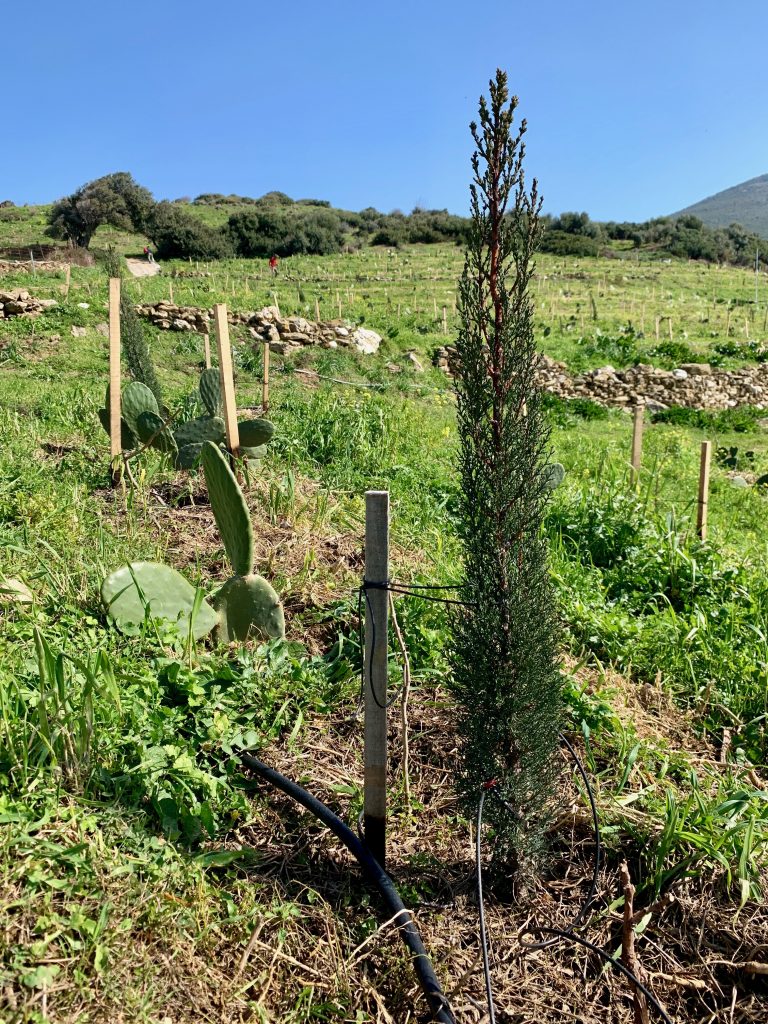
Another quality that has been important for us in our species choice is wind protection as, farming up on the hillside as we are, we are particularly vulnerable to wind damage. After looking into a range of wind strategies involving constructing artificial structures, it was unanimously decided that taking a natural approach using a wide border of trees around the circumference of the farm and at strategic places would be the most effective, both economically and ecologically. These trees, including fast-growing, tall cypress trees and slower-growth, sturdy carob trees with an understory of prickly pears, have been chosen to optimise wind resistance by stratification both through space and time. Although this might take a little while longer to create an effective wind barrier, we think it will ultimately be a much more durable and effective wind strategy.
Another less obvious way we are using support species in our system is for mechanical support for our grapes. Stakes, as we have recently found out, are costly, time consuming to put into place and eventually rot. So the question is, why use stakes when you can use trees? We have planted our vines next to our support species with the idea that they can grow up the trunk of their neighbour, as you observe vines doing naturally in forest systems.
Of course, as always in regenerative agriculture, it’s not just what is happening above ground that counts, but what is going on beneath your feet. Below ground you find a mirror image reflecting what’s happening above – by that, I mean that a tree will have an equivalent size root system below ground to support it. By introducing a diversity of species into your system, this means you therefore have a diversity of root depths, shapes and sizes, which works to prevent soil erosion, a huge problem here in Greece (and globally) and especially in sensitive areas such as on a hillside.
These roots also put out exudates to encourage a healthy root microbiome. Each individual species works to create an unique root zone microbiota, depending on their needs, so the more the merrier for creating a healthy, diverse soil microbiota. Furthermore, when the support species are pruned for their organic matter, the roots also shrink or grow to reflect the photosynthetic capacity of the plant. Therefore, any root die off caused by pruning means that nutrients from the roots are being put back into the ground, as well as providing more food for the all-important soil microbiology.
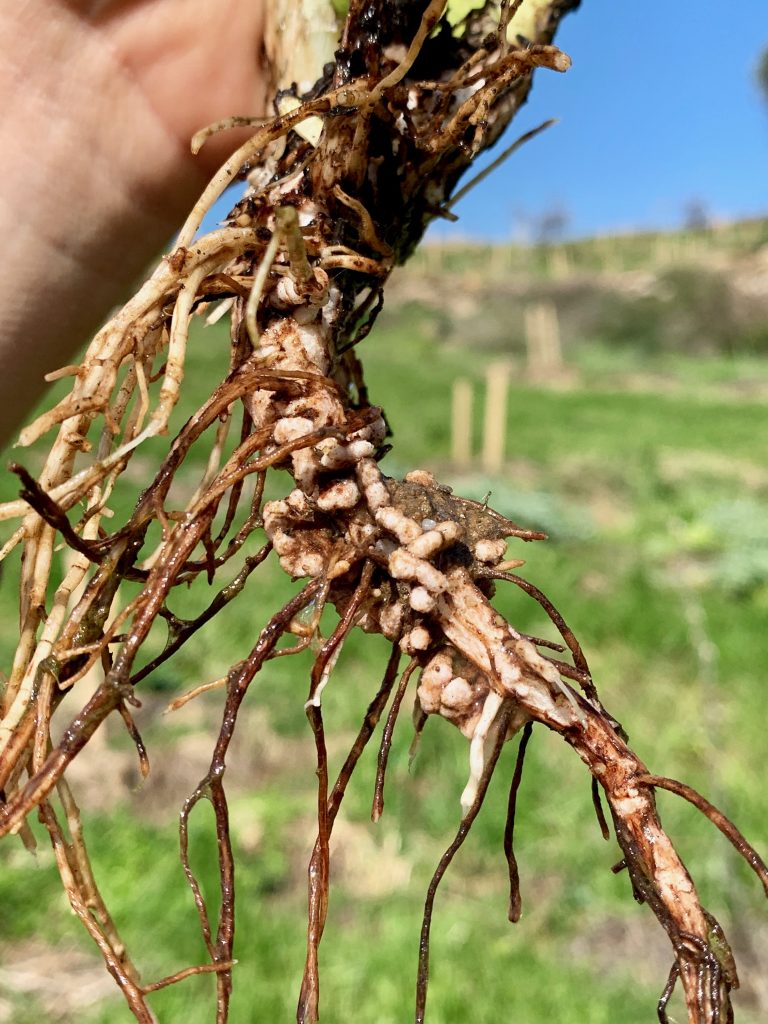
Last, but by no means least, our support species play a key role in our fertilisation strategy through the use of leguminous plants that have the ability to fix nitrogen. Certain trees and plants that have the ability to make symbiotic relationships with rhizobial bacteria who live in the root zone work hard to convert free nitrogen into a form that the plant can use. This relationship is vital for plant health as, although about 80% of our atmosphere is made up of nitrogen, plants themselves are unable to change inert nitrogen into the usable form of nitrogen required by plants in order to manufacture amino acids, proteins, nucleic acids, and the other nitrogen-containing components necessary for life. Nitrogen fixers we have used on the farm include Mendicago arborea and species of Acacia, as well as cover crops such as vetch, clover and lupin.
Support species show yet another way you can harness the power of biology to your advantage, optimising your system and your soil health through the incorporation of trees and plants in a whole range of ways!
more Letters from a Farm
Letter From The Farm | Mimicking Natural Processes in Greece
Letter from a Farm | Starting the Soil Health Journey in Ireland
more on Syntropic farming



